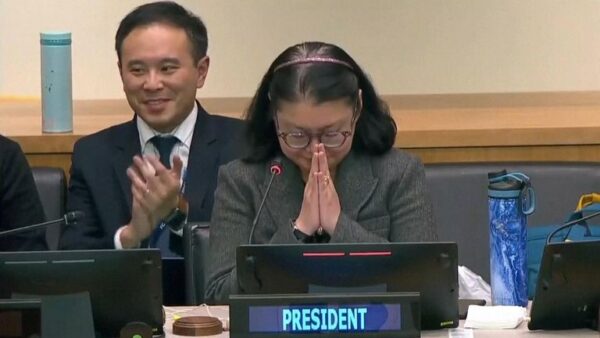In a historic breakthrough, United Nations members have finalised a landmark treaty in the international waters that lie outside any one country’s territory after nearly two decades of talks.
The commonly referred to ‘High Seas Treaty’, or more fully the Intergovernmental Conference on Marine Biodiversity of Areas Beyond National Jurisdiction (BBNJ / ABNJ), is the legal framework that aims to ensure the conservation and sustainable use of marine biological diversity of areas beyond national jurisdiction.
Throughout negotiations, countries debated a host of difficult issues, including how to distribute potential profits gained from marine resources, and where and how marine protected areas will be established.
‘The ship has reached the shore’, UN conference president Rena Lee announced after a marathon final day of talks between negotiators.
What next?
The treaty still needs to be ratified, and a number of questions remain over implementation. The International Union for Conservation of Nature (IUCN) is calling for adoption and ratification to be fast-tracked, to bring the High Seas Treaty into force. Even once ratified, there is a long way to go before full implementation.
What does it all mean?
Financing, conservation (i.e. Marine Protected Areas (MPAs) and other Area based Management Tools (ABMTs) and sharing of genetic resources are key elements. The treaty is important for achieving the targets of the Kunming-Montreal Global Biodiversity Framework, the 30×30 made at Montreal in December 2022. WWF said that while the text doesn’t include a reference to the Global Biodiversity Framework, it had a positive influence on the discussions. “Delegates highlighted the importance of the high seas treaty to meet the GBF targets,” Jessica Battle of WWF said.
Certain international organisations, such as the International Seabed Authority (ISA) and the Regional Fisheries Management Organisations (RFMOs) will retain many of their responsibilities, including for Environmental Impact Assessment in the former case. The draft text of the agreement states that “In taking decisions, the Conference of the Parties shall respect the competences of and, not undermine, relevant legal instruments and frameworks and relevant global, regional, subregional and sectoral bodies”
The road to MPAs in areas beyond national jurisdictions will be a long way: even beyond ratification of the Treaty, there will be a need for consensus decision making where possible and/or majority voting to move proposals towards designation.
Reaction
Greenpeace hailed it as “the biggest conservation victory ever” while U.N. Secretary-General António Guterres said “This action is a victory for multilateralism and for global efforts to counter the destructive trends facing ocean health, now and for generations to come.”
Therese Coffey, the UK Environment Minister, said ‘Fantastic news on the new UN High Seas Treaty. Our oceans breathe life into our world and store vast amounts of CO2. It’s an historic step as we aim to protect 30% of the ocean by 2030’.
The former UK Prime Minister, Boris Johnson, said ‘This is wonderful news for the world. It’s time to stop the plunder and the pollution of our seas. I am proud of the way the UK has helped to lead.’
Coverage
There was extensive coverage of this story across the globe, here is a selection:
News media outlets: Sky, inews, ABC, CNN, BBC, France24, Guardian, Brussels Times, Bloomberg, New York Times, RTE, amongst many others.
NGOs: IUCN, WWF, The Nature Conservancy, Greenpeace.
International Organisations: UN, OSPAR, Australian Government and EU.
The draft text of The Treaty can be read here.
